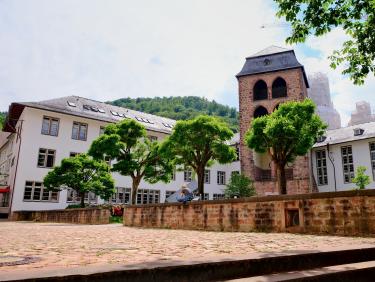
Department of History
Prüfungsanmeldung im SoSe 2025

Department & Library
The Department of History with its 10 chairs and the Institute for Franconian and Palatinate History are organisationally part of the Centre for European Historical and Cultural Studies (ZEGK) in the Faculty of Philosophy. In addition to its organisational affiliation, the Department of History cooperates within its degree programmes with multiple institutions beyond the Centre and the Faculty in terms of teaching. The closest co-operation is with the Department of Ancient History.

Studies
The Department of History and the Department of Franconian and Palatinate History itself offer courses for the periods of the Middle Ages, Early Modern Period and Modern History as well as Contemporary History. The main regional and specialised disciplines represented in the department are American history, regional history, public history, Eastern European history and global history as well as Medieval Latin.

Research
The research work at the 10 professorships in the Department of History at Heidelberg University covers a broad spectrum of epochs, regions and methods. You can find more information on the specific areas of specialisation, current research projects as well as doctoral and postdoctoral projects on the corresponding webpages of the professorships.

People
Everything at a glance: Contact details of all teaching and administrative staff at the Department of History are summarised in a table. Both students and lecturers at the department are organised in several committees that facilitate networking and the representation of common interests.










